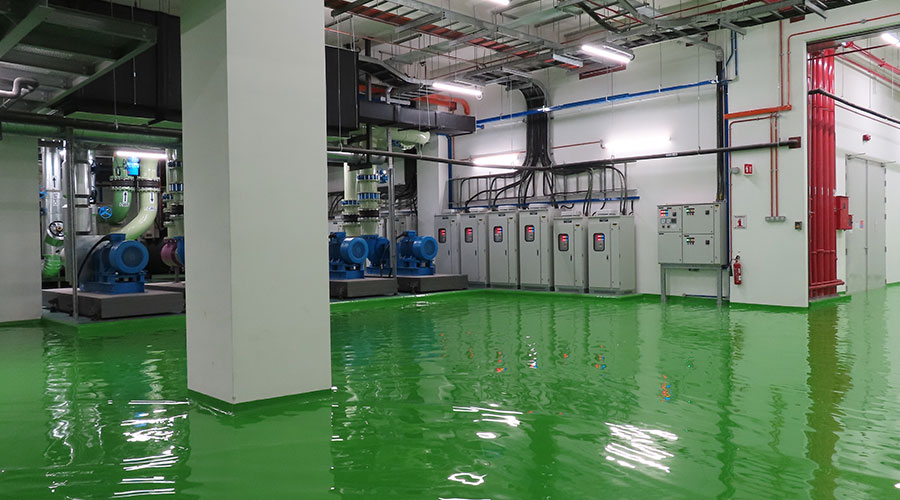Backup Power is Critical Concern
Over Memorial Day weekend, thousands in the Southeast went without power as Tropical Storm Beryl made landfall near Jacksonville, Fla., and wreaked havoc with high winds and rain up the Eastern Seaboard.
Coming on the heels of Tropical Storm Alberto, Beryl's late-May appearance marked the earliest point in the year that two tropical storm formations developed in the Atlantic Ocean since 1908. Meanwhile, the Northeast and Midwest tapped electrical reserves as record temperatures hit nearly 200 cities. Weather extremes are becoming the new normal. There has been "a dramatic increase in severe weather events — tornadoes, hurricanes and tropical storms and floods, in the last 10 years," says Michael Pope, president of the Electrical Generating Systems Association (EGSA). "This phenomenon has been particularly dramatic in the last three years." Pope is also senior sales engineer and marketing manager for Süd-Chemie, Inc., a Clariant Group Company.
For facility managers, bad weather raises the question: What happens if the utility power goes out? "It becomes an economic issue," says Pope. "How long can we be out of power before it hurts our business?"
A wide range of facilities are taking a look at emergency power options. "I tend to categorize buildings needing emergency power into those that are legally required, such as hospitals or high-rise buildings with electrically operated elevators, and optional applications, which are driven by insurance or economic reasons," says Al Prosser, director of sales for MTU Onsite Energy. Even among facilities mandated by code to provide backup power, a growing number are providing emergency power beyond code mandates.
Today's global pace of business is lightning fast. "We are an 'always on' society," says Charlie Habic, vice president of sales and distribution management for Gillette Generators. "Many companies cannot afford to be without power for very long. In two or three days, they can be out of business."
The growth in on-site power is because "we are a technology-driven, power-dependent society," says Bob Hafich, co-president of Emergency Systems Service Co. "Years ago, many businesses required only emergency lighting," he says. "Retail stores used manual cash registers, so they could still check customers out during a power failure. But today, when the power shuts down, the computerized cash registers are off-line. Everything is digital."
All backup power systems need to be properly sized. That's because when they are powered up, emergency generators run at top power. Variable power demands can be met by smaller units, which can be brought online as power needs increase.
One size definitely does not fit all emergency power applications. "There are different voltages, single- and three-phase, 208, 240, 480 and so on to meet different needs," Habic says. "So it's very important to look at the building's power needs and design the backup power to meet those needs."
Engine Improvements
Facility managers familiar with older, noisy, smoke-producing monster diesel generating sets may not recognize today's models. Emergency power systems have benefited from many engine innovations in the past decade.
Stationary modern emergency power systems have sound attenuation and smaller carbon footprints because of new engine designs. Housings offer sound insulation and weather protection to the engine.
Another improvement is in engine efficiency. According to Pope, the thermal efficiency of diesel engines used to be around 33 percent. Thanks to technical advances, "today's diesel engines operate at 40 to 45 percent efficiencies," Pope says.
About EGSA
The Electrical Generating Systems Association (EGSA) is the world's largest trade association devoted to electrical power generation. EGSA focuses on on-site power generation, which ranges from backup power to demand response to prime power — even alternative power sources such as wind and solar.
EGSA members include manufacturers, distributors, contractors, engineers, service firms and end users. The association aims to provide education and networking opportunities and to share industry knowledge and trends. EGSA helps develop national standards involving on-site power.
EGSA developed the Electrical Generator Systems Technician Certification Program to identify technicians who have broad knowledge of electricity, mechanical and electrical components and interactions between them, and are proficient in installation, service, maintenance and repair of on-site power generation systems.
EGSA also offers meetings and trade shows, along with basic and advanced courses for the on-site power industry. The association also publishes a 600-plus page guide, On-Site Power: A Reference Book, and Powerline Magazine. For more information about EGSA, visit www.egsa.org.
|
Related Topics:












